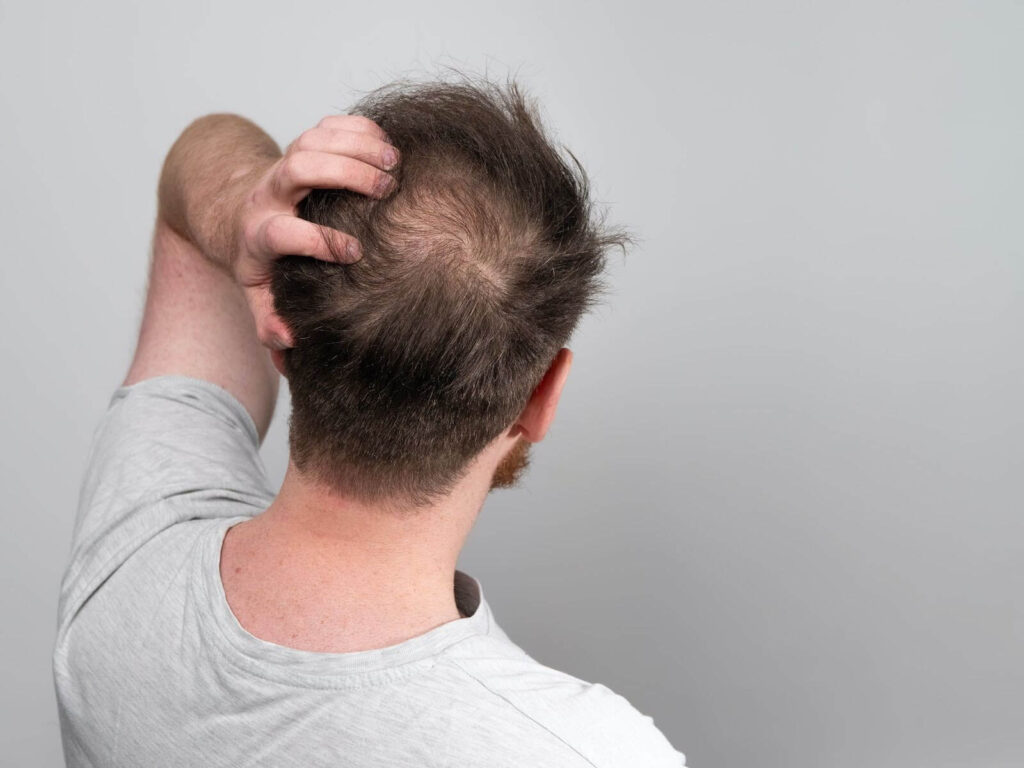In recent years, a new technology has emerged in the world of medical hair transplants: Robotic Hair Transplants. How are these different from what we might call “regular” hair transplants, such as NeoGraft? Below our Hair Doctor team shares how each technology works, with pros and cons for each of them.
What to Know About Artas vs. NeoGraft® Hair Transplants
NeoGraft: A Technician Harvests the Hair
NeoGraft is a hair transplant system based on Follicular Unit Extraction or FUE. To extract individual follicles of hair, a NeoGraft Master Technician uses a wand under pneumatic pressure to pull out the hair follicles. These follicles are picked from the back of the head, the area that is typically not affected by male pattern baldness. The harvested follicles are later implanted in the balding areas.
To determine which follicles of hair to extract, the technician uses her knowledge and experience. Some technicians or doctors are new in the hair transplant field and have yet to build up their skill. A good NeoGraft Master Tech may have decades of experience in the field, allowing him or her to efficiently extract a large number of follicles.
When harvesting hair, the trick is picking the right follicles – those that have the best chance of “taking” to the new location – and to not damage them during extraction. The rate of damaged hair follicles that don’t “survive” a transplant is also called the transection rate. Well-trained and experienced NeoGraft Master Technicians achieve a very low transection rate.
Artas: A Robot Harvests the Hair
For Artas Robotic Hair Transplants, a machine extracts the follicles of hair. Just like with NeoGraft, the goal is to extract the follicles in a pattern that least affects the donor area and ensures a low transection rate. For instance, you don’t want to extract all the follicles in a small area right next to each other. You want to leave the donor area as much intact as you can and not create a new problem where there wasn’t one before.
The Artas robot does all of this based on a machine algorithm to determine which follicles to extract. It has a robotic arm that is guided by detailed video-imaging, and the process is overseen by a physician or technician who monitors the computer screen.
Artas vs NeoGraft: Which is Better?
First off, it is important to know that Artas vs NeoGraft only differs in the way the hair is harvested. In both cases, a technician later manually implants or transplants the hair in the balding areas. Both Artas and NeoGraft are minimally-invasive, and a local anesthetic ensures that there is no discomfort during the procedure. Discomfort after the procedure is only mild, and your recovery time is not affected – in both cases, the puncture marks from extraction and implantation heal in a week to ten days.
Why would you choose Artas vs NeoGraft? Proponents of Artas will say that a robot is more precise and less error-prone than a human. But the data on this is inconclusive. While Artas robotic hair transplants generally achieve a low transection rate, a skillful Neograft technician can achieve an even lower transaction rate. It all depends on his or her training and experience. Hair extraction is as much art form as precision, and a machine can rarely beat a gifted artist in her craft.
Whichever way you look at it, good knowledge of hair is key, especially if it is gained over decades of experience. Remember that the technician is also the one implanting your hair, which requires unique aesthetic skill. Creating a new hairline where there was none before is especially tricky – you don’t want it to look fake or not appropriate for your age. You could argue that the NeoGraft technician who has done this for years is better equipped to get you results that look great and are not detectable. Some physicians using Artas may be relatively new to the field. They may not have offered hair transplants in the past until the Artas Robotic hair transplant technology gave them an easy way in – it may be easier and require less training to monitor a computer rather than manually extract hair.
Choosing Your Artas or NeoGraft Provider
Whether you prefer Artas or NeoGraft, it is important to choose a provider who has extensive experience with hair transplantation. How long have they practiced hair transplants? What are their results? Do they have their own patients’ before and after pictures, or are they supplied by the manufacturer?
The number one concern most patients have when choosing a hair restoration provider is whether the results will look good and professional. Both Artas and traditional Follicular Unit Extraction like NeoGraft can have great results in the hands of the right technician or doctor.

